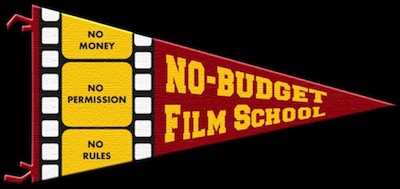|
Dear Filmmakers,
The following article is an example of the
kind of content I intend to create more of once my new web site is up, sometime in 2015. If you like this kind of information,
please subscribe to my mailing list--there will be plenty more of this to come!
Best,Mark |
| |
| TANGERINE DREAM: THE INSIDE
STORY ON THE SUNDANCE IPHONE FILM
|
| | by Mark Stolaroff, April 2015 |
| | I first became aware of filmmaker Sean Baker when they announced
the nominees for the 2008 Cassavetes Award. That's the award given at the annual Spirit Awards celebration to the best
low budget film of the year, (generally considered to be made for under $500k). As you might imagine, this is a category that
I'm pretty familiar with, so I was a little taken aback when I noticed there were two films that year that I hadn't
heard of. And they were both directed by the same guy--Sean Baker! Who the hell was Sean Baker and why wasn't anybody
talking about him? Shit, he has two films nominated in the same year! I tracked Sean down and insisted he
come speak to my class sometime, which he was finally able to do in May 2013, after completing his next feature film, Starlet,
which was also nominated for a Cassavetes Award. |
| 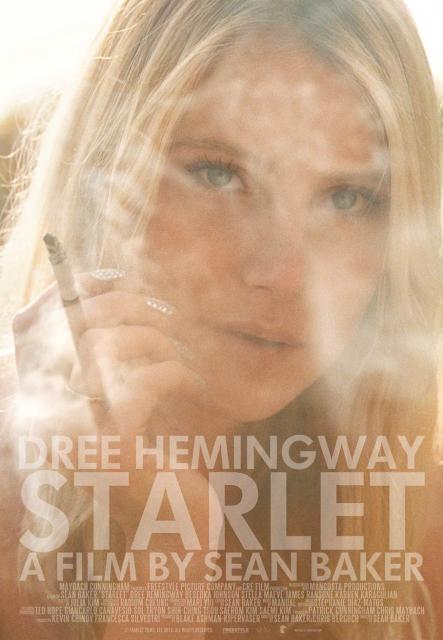 While Take Out, his second film (made for $3,000), and Prince Of Broadway,
his third film (made for $45,000), were the kind of small films that get you noticed, Starlet was supposed to be
his breakout film. Made with real professional actors, (the other films featured amazing non-pros), including breakout star
and Ernest Hemingway great-granddaughter Dree Hemingway, Starlet somehow fell short of the incredibly difficult mark
that is big-time independent film success. Sure, it received amazing reviews and got that Cassavetes nomination, and won the
prestigious Robert Altman award at that year's Spirits, but its theatrical release was nominal and worse, it didn't
get Sean that next big film. Like a lot of even successful indie filmmakers, Sean struggled to get real money to make his
next film. While Take Out, his second film (made for $3,000), and Prince Of Broadway,
his third film (made for $45,000), were the kind of small films that get you noticed, Starlet was supposed to be
his breakout film. Made with real professional actors, (the other films featured amazing non-pros), including breakout star
and Ernest Hemingway great-granddaughter Dree Hemingway, Starlet somehow fell short of the incredibly difficult mark
that is big-time independent film success. Sure, it received amazing reviews and got that Cassavetes nomination, and won the
prestigious Robert Altman award at that year's Spirits, but its theatrical release was nominal and worse, it didn't
get Sean that next big film. Like a lot of even successful indie filmmakers, Sean struggled to get real money to make his
next film.
Frustrated, and aching
to make another film, even another micro-budget one, he contacted Mark Duplass, who had expressed interest in working with
Sean after seeing Prince of Broadway. Sean pitched Mark the idea for Tangerine, a multi-story film set in
the world of Hollywood transgender prostitutes of color, and 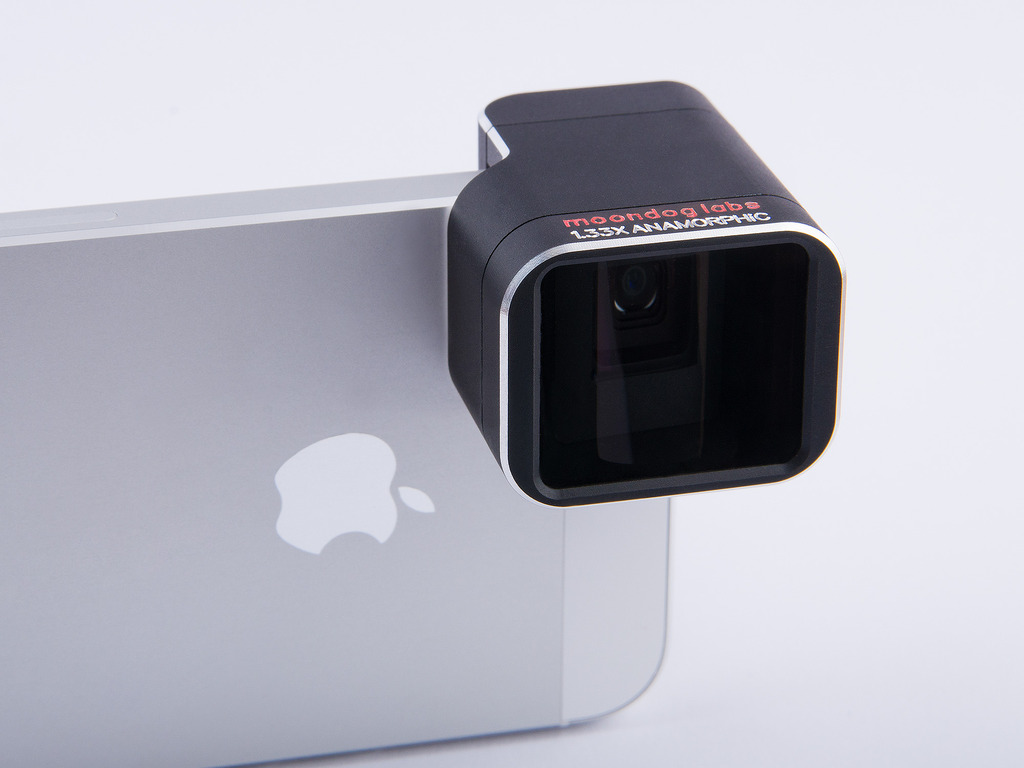 Mark loved the idea and agreed to provide the financing. While it was relatively easy (and fast) money, it wasn't enough
to shoot on an Alexa or a RED, (and there was no room in the budget for an AC or DIT), and Sean wasn't interested in shooting
on a DSLR because he wanted it to look different somehow. After exploring videos on Vimeo, he came across several that were
using a new anamorphic adapter from a company called Moondog Labs. These adapters were designed for the iPhone 5 and he fell in love with the look. In addition to the price being
right--he already had an iPhone--he knew the small footprint would benefit his lead actors, two non-pros he met at an LGBT
center in Hollywood, down the street from where they would eventually shoot much of Tangerine. Mark loved the idea and agreed to provide the financing. While it was relatively easy (and fast) money, it wasn't enough
to shoot on an Alexa or a RED, (and there was no room in the budget for an AC or DIT), and Sean wasn't interested in shooting
on a DSLR because he wanted it to look different somehow. After exploring videos on Vimeo, he came across several that were
using a new anamorphic adapter from a company called Moondog Labs. These adapters were designed for the iPhone 5 and he fell in love with the look. In addition to the price being
right--he already had an iPhone--he knew the small footprint would benefit his lead actors, two non-pros he met at an LGBT
center in Hollywood, down the street from where they would eventually shoot much of Tangerine.
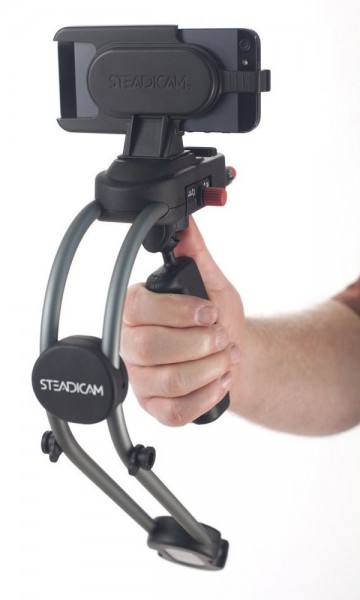 While Duplass was excited about the idea of shooting on an iPhone, (and was both supportive when it was needed and also incredibly
hands off), Sean shot a series of tests with the iPhone and the actors and created a four minute music video using the test
footage, eventually showing it to cast and crew as proof of concept. In addition to the Moondog adapter, Sean also utilized
the Filmic Pro iPhone app, which gives you better control over focus, exposure, white balance, and perhaps most importantly, bit rate, allowing
him to shoot at a much higher 50Mbps rate. He also made good use of the Smoothee camera support, made by Steadicam. While it took awhile to get the hang of the Smoothee, he soon developed his own style
of shooting with this set-up. While Duplass was excited about the idea of shooting on an iPhone, (and was both supportive when it was needed and also incredibly
hands off), Sean shot a series of tests with the iPhone and the actors and created a four minute music video using the test
footage, eventually showing it to cast and crew as proof of concept. In addition to the Moondog adapter, Sean also utilized
the Filmic Pro iPhone app, which gives you better control over focus, exposure, white balance, and perhaps most importantly, bit rate, allowing
him to shoot at a much higher 50Mbps rate. He also made good use of the Smoothee camera support, made by Steadicam. While it took awhile to get the hang of the Smoothee, he soon developed his own style
of shooting with this set-up.
Production
started in December 2013 with Sean shooting exclusively for the first week while his regular DP Radium Cheung, (who worked
with him not only on Starlet, but also on his TV show Warren The Ape), was traveling. Radium also developed
his own shooting style and the two of them shot simultaneously. At 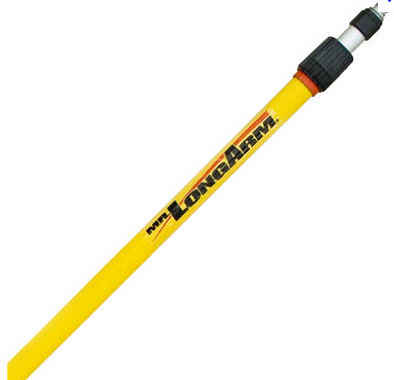 first Sean was using steady tracking shots to cover the action, then he tried things like riding alongside on his bicycle.
Eventually, he got more experimental, using dramatic swooping shots that mirrored the material in the script. This is when
they knew they were on to something--they knew they needed to be participating in the chaos and the tiny cameras were giving
them the freedom and ability to do so. I remember being struck by several dynamic "crane" shots, which were
produced by mounting the iPhone to the end of a $35 painters pole. Try that with a 14 pound Alexa! first Sean was using steady tracking shots to cover the action, then he tried things like riding alongside on his bicycle.
Eventually, he got more experimental, using dramatic swooping shots that mirrored the material in the script. This is when
they knew they were on to something--they knew they needed to be participating in the chaos and the tiny cameras were giving
them the freedom and ability to do so. I remember being struck by several dynamic "crane" shots, which were
produced by mounting the iPhone to the end of a $35 painters pole. Try that with a 14 pound Alexa! They shot for 23
days, (and one additional day--Christmas Eve 2014--right before Sundance), which might seem exorbitant except that they were
working with inexperienced actors, so Sean knew they needed plenty of time to get the performances just right. And these were
in no way conventional shooting days. Most days were pretty casual, so there were no killer 14 hour days. Most of the film
was shot around magic hour; typically they would work from around 1pm to 10pm. The crew was experienced, but small: Director,
AD, DP, Sound Mixer, and Sean’s frequent collaborator Shih-Ching Tsou, who wore multiple hats as Costume Designer, Props,
AC, Graphic Designer and Producer. Lighting was very limited, with Radium using a portable LED light as
fill when necessary. 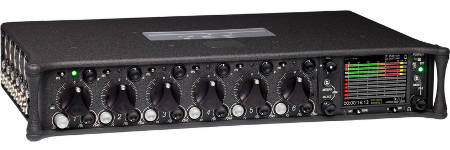 Sound, on the other hand, was a beast. Veteran sound mixer Irin Strauss recorded dialogue on his Sound
Devices 664 in an Altman style, with wireless lavs on everyone (and he used a boom mic too). His unit was bigger than anything
having to do with camera. In the climatic scene, he was live mixing eight tracks at once, and because all the actors were
on separate tracks, they could choose in post which lines to bring up to the forefront. Sound, on the other hand, was a beast. Veteran sound mixer Irin Strauss recorded dialogue on his Sound
Devices 664 in an Altman style, with wireless lavs on everyone (and he used a boom mic too). His unit was bigger than anything
having to do with camera. In the climatic scene, he was live mixing eight tracks at once, and because all the actors were
on separate tracks, they could choose in post which lines to bring up to the forefront.
The production was insured and they obtained a filming
permit, which covered them for several blocks near the corner of Santa Monica and Highland. Outside that grid, shots were
stolen, but because of their tiny iPhone footprint, they never got busted. And while things get pretty out of hand onscreen,
behind the camera safety was a high priority. Sean is DGA, so certain rules were followed and his DGA AD (who was incidentally
also an AD on Furious 7), kept things under control. The post workflow was pretty simple. After downloading the material off the iPhones, they would transcode
the h.264 files to ProRes 4:2:2 overnight using Compressor, (which increased the size of the files by about 10 times, which
meant they needed tons of hard drive space). Sean edited the film in Final Cut Pro 7 on his MacBook Pro,
applying filters as he edited. This bogged down his system quite a bit, crashing the computer frequently. Even though the
film has a gritty, authentic look, little post tricks were applied that you might associate with a bigger film.
For instance, in the long opening dialogue scene where the two leads talk in the Donut Time, what you can see out the
window in between them was matted for continuity purposes. 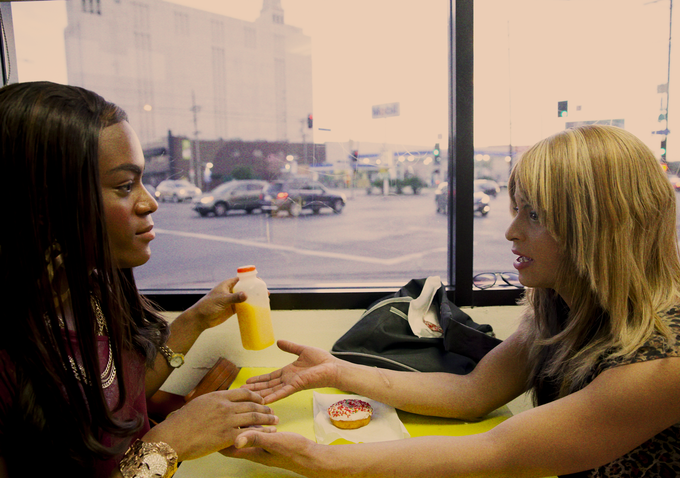
With very little money to get them to the
finish line, Sean took the film to Matt Radecki (a frequent No Budget Film School guest speaker) and Matt’s company
Different By Design handled color correction, online editing, and DCP creation (through a relationship they have with Simple DCP). Although I
spoke to Sean during this time, I had no idea the film was shot on an iPhone. When I saw it at Sundance in the Press and Industry
screening, I was kind of shocked when I read in the closing credits that it was shot that way, (Sean considered not admitting
to it). It’s not that I would say that the iPhone footage looked “good,” (although often it did); it’s
that it looked “right.” The iPhone’s naturally saturated and contrasty look fit the material to a tee, and
Sean’s energetic and visceral shooting style matched the story and the characters’ anarchic lives perfectly.
Was shooting with the iPhone a stunt? Only in the way that shooting a surfing video with a GoPro or a network television
show with an Alexa is a stunt. It was simply the right tool for the job. Famously, the film was picked up for distribution by Magnolia Pictures at Sundance
with much fanfare. I encourage all of you to see it when it opens on the big screen. Filmmakers get hung
up on cameras, thinking they won’t take you seriously if you don’t shoot with a RED or an Alexa. But as I’ve
said many times in my classes, they don’t care what you shoot on. Unless you shoot on an iPhone...
Copyright
© 2015 Mark Stolaroff. All rights reserved.
-------------------------------------------------------------------------------------------------------- Connect with Me and Other No-Budget Filmmakers
Not a member of my new Facebook Group?
What are you waiting for?? Join today:
Make No-Budget Films Facebook Group
Follow Me on Twitter:
@Stolaroff
Like No Budget Film School on Facebook:
No Budget Film School Facebook Page |
| |
ARCHIVED EDITIONS OF THE NO BUDGET REPORT:
|
